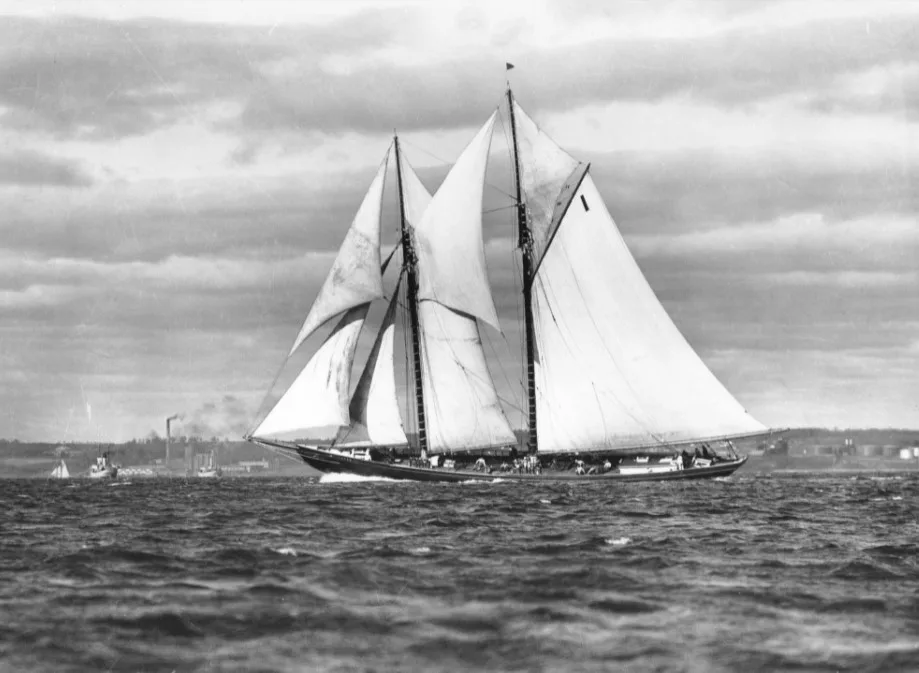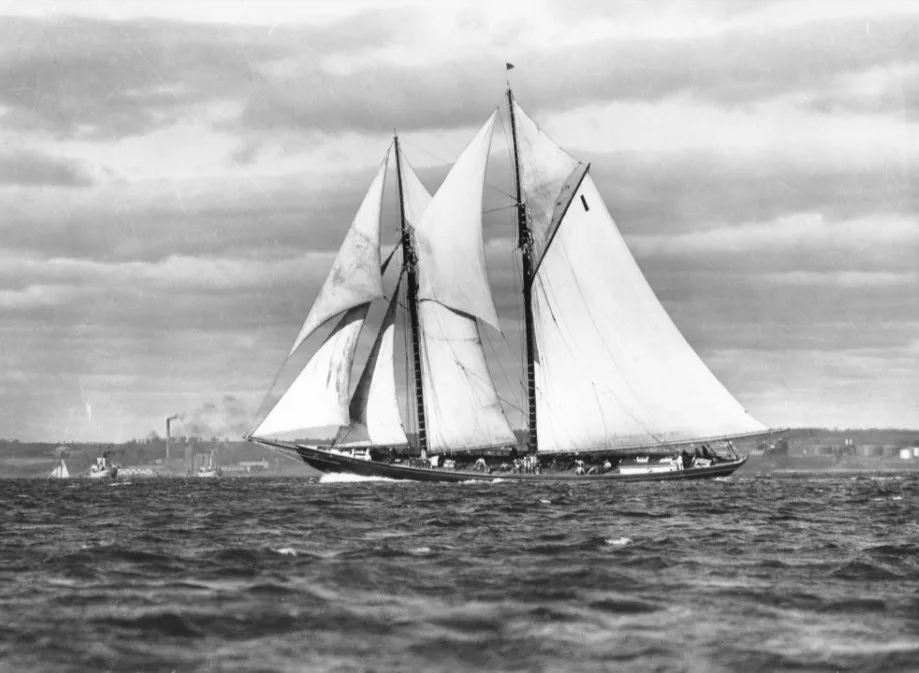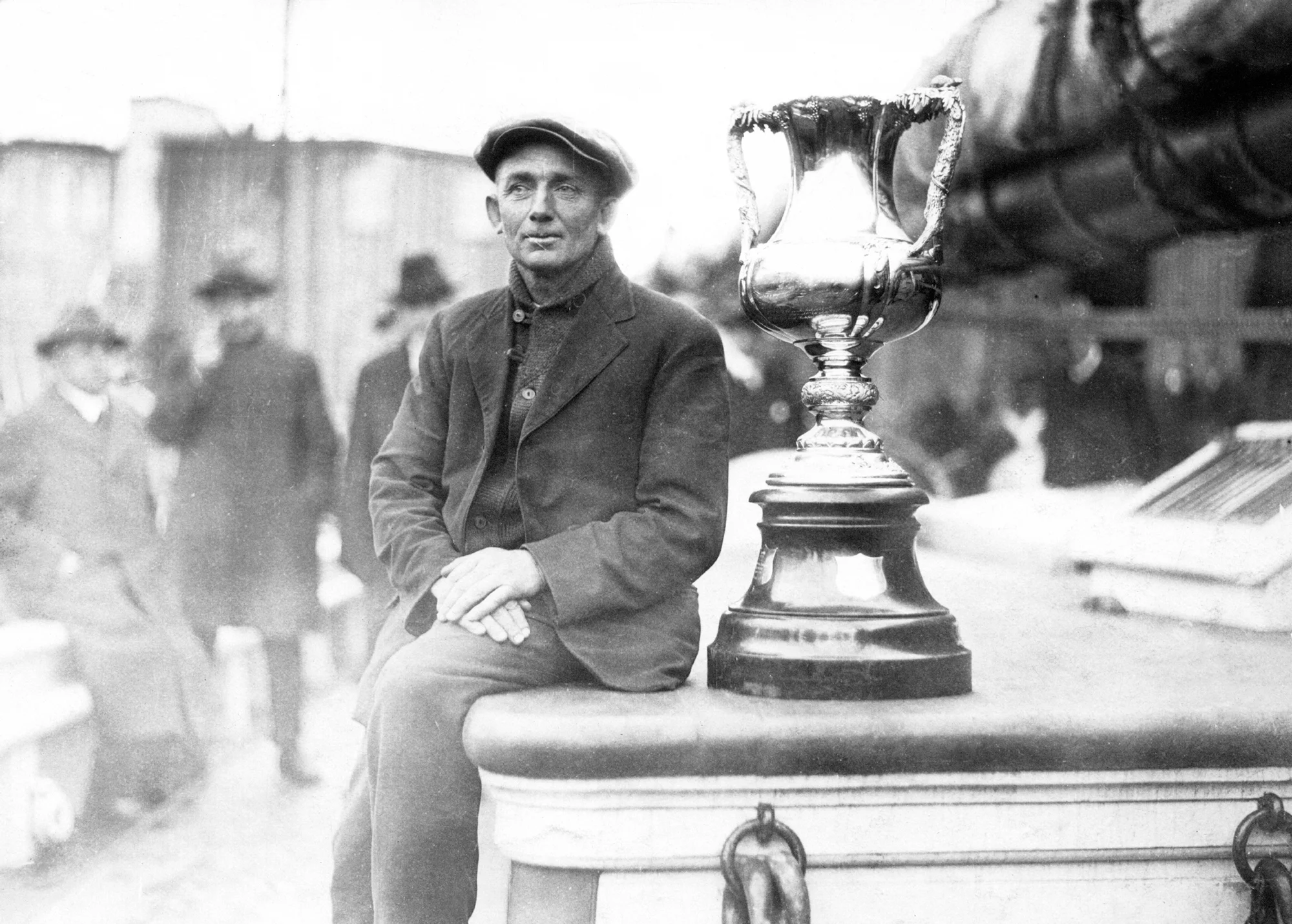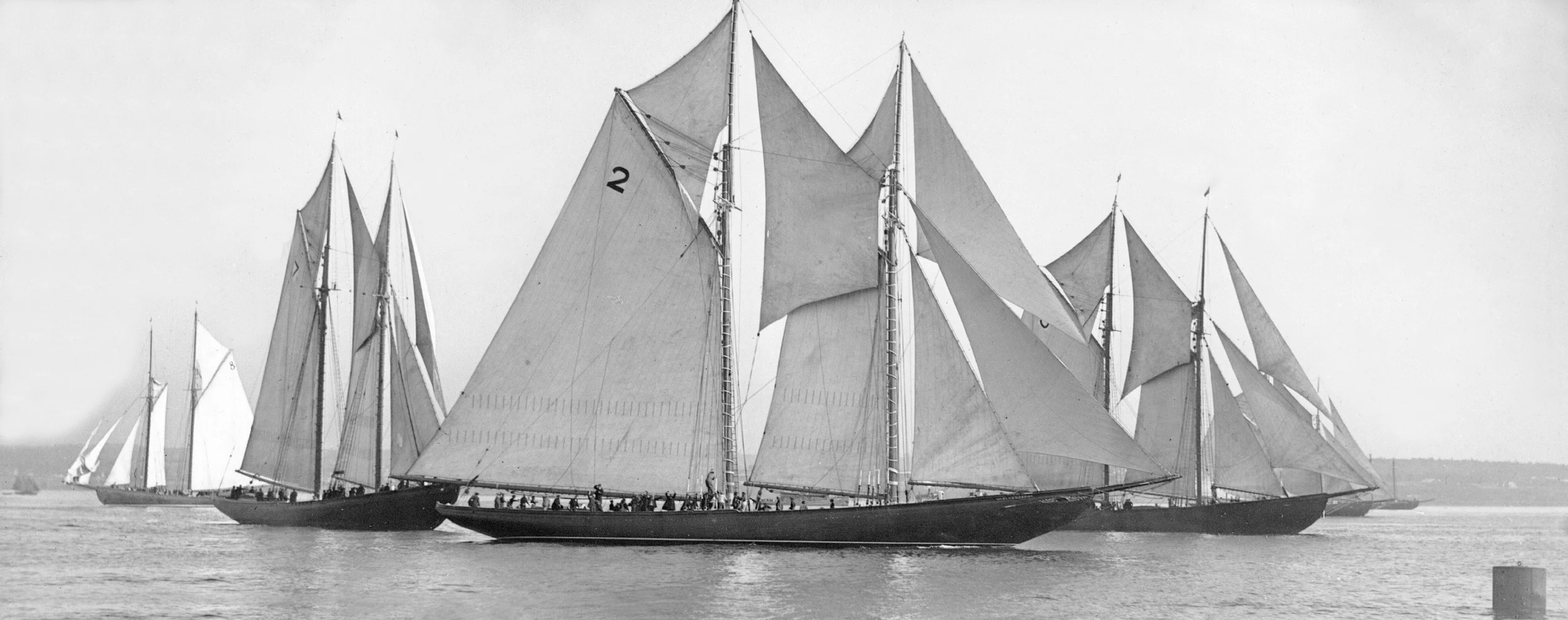
Bluenose, the sailboat on the dime, celebrates its centennial
On this day in weather history, Bluenose was sailing the North Atlantic.
This Day In Weather History is a daily podcast by Chris Mei from The Weather Network, featuring stories about people, communities and events and how weather impacted them.
--
Bluenose was a fishing and racing schooner that was built in 1921 in Nova Scotia, Canada. It was designed by William James Roué, a Nova Scotia native. For almost 20 years, Bluenose was the fastest racing ship in the world.
In the 1930s, Bluenose became an icon for Nova Scotia, reaching peak fame when it was added to the Canadian dime in 1937. It's also currently pictured on the Nova Scotia license plate.

Bluenose in Dartmouth, Nova Scotia, 1931 (W.R. MacAskill, Nova Scotia Archives, 1987-453 no. 354)
Bluenose set out on its first fishing trip on April 15, 1921. It set sail for up to four weeks at a time until the crew filled up the boat's holding capacity.
Angus Walters was Bluenose's part-owner and captain for most of her career. After the fishing season, Walters took her out to their International Fisherman's Cup. The Cup was awarded to the fastest fishing schooner that worked in the deepsea fishing industry in the North Atlantic.

Captain Angus Walters with the International Fishermen’s Trophy on the deck of the Bluenose, 1921. (W.R. MacAskill, Nova Scotia Archives, 1987-453 no. 261)
First, Bluenose had to win in the Canadian elimination race to determine who would represent the country. Bluenose won no problem. She represented Canada and defeated the American challenger, Elsie, taking home the International Fishermen's Trophy.

1921. Bluenose Coming Up to the Start of the First Elimination Race. From left to right, Delawana (Sail No. 8), Alcala (No. 7), Bluenose (No. 2) and Canadia (No. 6). (W.R. MacAskill, Nova Scotia Archives, 1987-453 no. 3916)
The next year Bluenose took home the Trophy again, this time beating the American challenger Henry S. Ford, which was designed to beat the iconic Canadian schooner.
In 1923, Americans built the Columbia to face Bluenose. That year, there were new rules instated. The Bluenose broke the rules, but Walters contested the call. Drama ensued, and the race ended up in a tie. The drama caused an eight-year hiatus of the race.

Bluenose postage stamp of 1929 (Canada Post)
During World War II, Bluenose stayed in Nova Scotia and was sold to the West Indies Trading Company in 1942. On Jan. 1946, the vessel hit a coral reef off Île à Vache, Haiti, which wrecked her beyond repair.
In honour of Bluenose's centennial, the Royal Canadian Mint issued a 2021 commemorative silver dollar.
To learn more about the Bluenose, listen to today's episode of "This Day In Weather History."
Subscribe to 'This Day in Weather History': Apple Podcasts | Amazon Alexa | Google Assistant | Spotify | Google Podcasts | iHeartRadio | Overcast'









